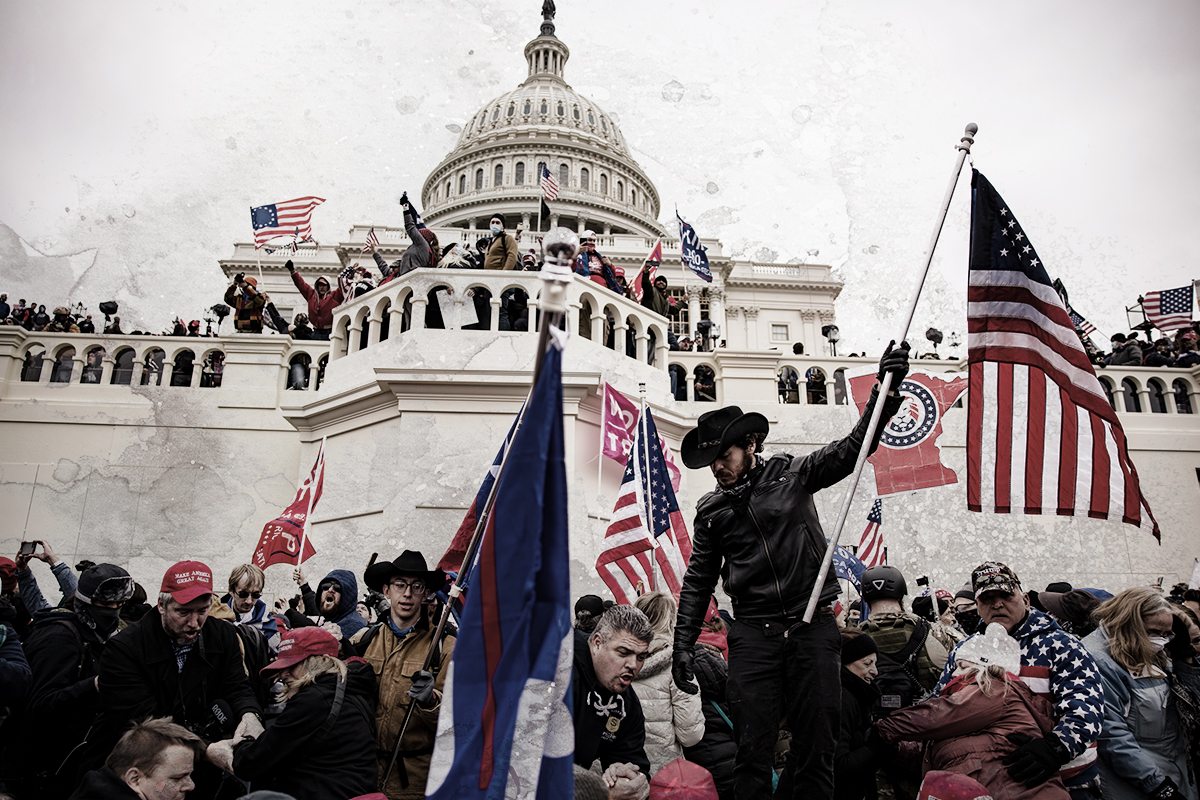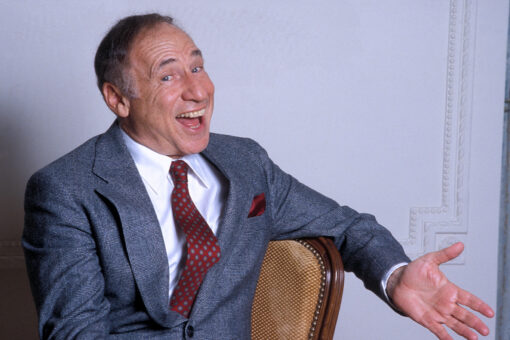I grew up in Washington, D.C. — not in the suburbs of Maryland or Virginia, which is often what people mean when they say that, but just inside the borders of that federal, liminal place that is the District of Columbia.
Some think of the capital as a collection of federal buildings and government officials. But it’s much more than that. It’s a beautiful, green city, each neighborhood with its own architectural and cultural character. Over half a million people live there, many of whom have nothing to do with running the country.
I now live in New York, and I hadn’t been back for more than a holiday weekend here and there until the pandemic. But I was there when COVID-19 hit, and lived with my parents for four months. In those uncertain early days of grocery disinfection and rising death tolls, I walked its tree-lined streets and ordered takeout from neighborhood restaurants. Even after these many years living elsewhere, D.C. will always feel like home.
So when white supremacists, conspiracy theorists, and neo-Nazis breached the capital in an outrageous and violent attempt to overturn the election results on January 6, 2021, it didn’t just feel like a threat to democracy. It was an invasion of a place that I loved — my hometown.
Unless they work in the halls of federal government, few D.C. residents spend a lot of time on the National Mall. Like Times Square in NYC, the Capitol and the monuments are the domain of tourists. But many people do live on Capitol Hill, a residential neighborhood just blocks from where yesterday’s attempted coup took place. On January 6th, my oldest friend texted me in fear from inside her house, close enough to the chaos for its sound waves to reach her: “I can hear the crowd chanting ‘TRUMP’ from here,” she wrote. “This is… I don’t have words anymore.”
Yesterday’s images speak more eloquently to the terror than any words can. We Jews are notoriously prepared for the worst, and the prospect of persecution is rarely far from our minds. In a year that’s been full of omnipresent Jewish anxiety, the sight of Confederate flags and Nazi slogans in our highest halls of government was a nightmare come to life.
But one of the most alarming things about yesterday was D.C.’s total impotence to protect itself. People on the internet kept asking where the police were, and why the National Guard took so long to arrive. Though some of this was due to police and military jurisdiction issues around the Capitol, there’s a simpler answer, too: because D.C. is not a state.
It should be. And now, maybe, it finally will be.
D.C. was carved out from the undesirable swampland in Maryland and Virginia when the country was founded. In segregating it from any state and granting the federal government jurisdiction over the new district, the founders purportedly intended to prevent any local government from having undue federal influence. Per Article I of the Constitution: “The Congress shall have Power… To exercise exclusive Legislation in all Cases whatsoever, over such District (not exceeding ten Miles square) as may, by Cession of particular States, and the Acceptance of Congress, become the Seat of the Government of the United States.”
But, as is often the case in American history, uglier prejudices have also contributed to D.C.’s status. During the Civil War, President Lincoln signed a bill abolishing slavery in the District nine months before 1863’s national Emancipation Proclamation — and even before that, a community of free Black people was growing there, eventually becoming a majority of the city’s population.
After the war, former members of the Confederation began to win election to Congress — and some of them began to argue for denying representation to D.C. residents, without bothering to conceal their racist motivations. Alabama senator (and former Confederate general and enslaver) John Tyler Morgan said that disenfranchising D.C. was “necessary” to “burn down the barn to get rid of the rats… the rats being the negro population and the barn being the government of the District of Columbia.” He continued, “Negroes… came in here and they took possession of a certain part of the political power of this District… and there was but one way to get out — so Congress thought… and that was to deny the right of suffrage entirely to every human being in the District and have every office here controlled by appointment instead of by election… in order to get rid of this load of negro suffrage that was flooded in upon them.”
The racism did not abate over the next century. For most of the 1900s, Congress made D.C.’s laws, and it couldn’t elect its own mayor. In the 1960s, the Southern chairman of the Congressional committee that oversaw D.C. responded to the Black (Presidentially-appointed) mayor’s proposed budget with a truckload of watermelons. And though D.C. finally was granted some additional authority to govern itself with the Home Rule Act of 1973, Congress can still review any bill the D.C. city council passes. Today, there continue to be partisan motives for keeping the District a district. D.C. votes overwhelmingly blue, upwards of 90% Democratic. Its two Senators and its Representatives would almost certainly be consistent Democratic voices.
But none of this changes the unfair fact that those who make their homes and lives in D.C. do not have representation in our government the way other Americans do. Currently, D.C. residents only have the power to send a non-voting representative to the House. She can make the case for her constituents to voting members, but she has no actual vote to cast herself. (Eleanor Holmes Norton has held this position for over 30 years.) D.C. has only “shadow senators” in the Senate, Paul Strauss and Mike Brown. This means that my father, who became a citizen in 2015, has never had a true vote in either chamber.
It also means that D.C. has no governor, so the traditional chain of command for activating the National Guard, for instance, does not exist. In a state, the governor has unilateral authority to deploy its National Guard at will. They serve as that force’s commander. But in a federal district, that chain of command doesn’t go through D.C.’s mayor (currently Muriel Bowser). It goes up through the national Army Secretary — to the President.
What happens, then, if the Commander in Chief is not respecting the will of the people? What happens when the local government has no power to protect the representatives selected by each of the United States from an attempted coup by a wannabe dictator? What happens when the Presidency is used to incite violence from a mob?
We no longer have to wonder. We saw it yesterday, when, for nearly two hours after rioters first stormed the capital and streamed through the halls of Congress, nobody came to stop them. Imagine how differently yesterday could have played out if local leadership had been able to act more quickly. As it was, the federal government was the one responding to Nancy Pelosi’s request for National Guard. Eventually, neighboring Virginia and Maryland mobilized their own troops to come to D.C.’s aid. Governor Cuomo of New York also said he would send some 1000 troops to the capital.
D.C. residents were already angry about this state of affairs. The official D.C. license plate reads “Taxation Without Representation.” In a 2016 referendum on statehood, over 85% of residents voted in favor. In order for the district to become a state, a majority of Congress must vote in favor. We got halfway there in June of 2020, closer than ever before, when the Democratic-led House also voted in favor of statehood. But there was no way the bill would pass, or even be taken up, in Mitch McConnell’s Republican Senate.
So the other big news from yesterday becomes significant here, too. With a freshly-minted majority in the Senate — thanks to the elections of Rev. Raphael Warnock and (Jewish millennial) Jon Ossoff — and a bill already passed by the House, Democrats could take up the cause of D.C. statehood. They could correct for the fact that 700,000+ people — more than live in Vermont or Wyoming — don’t have representation in our democracy. Joe Biden signaled his support in a tweet earlier this year, and Mayor Bowser is already renewing her calls for it.
Jan 6, 2021 was not the first time D.C. suffered for its lack of local government, but it might have been the most vivid and the most visible. Perhaps a silver lining from yesterday will be that the case for D.C. statehood has played out on the national stage. It would provide a check on federal leadership in times of crisis, enfranchise and protect the people of the city, and help our federal government better reflect what America actually looks like.
And, thanks in large part to Stacey Abrams and the incredible organizers in Georgia, it may actually be possible.



